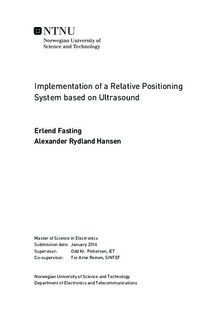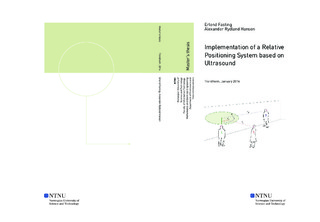| dc.description.abstract | Speech communication is essential in human interaction. When working or residing in noisy environments, hearing protectors must be used. This leads to reduced communication abilities. If traditional communications systems are used, the natural ability to localize sounds spatially is reduced, resulting in discomfort and unnatural communication.
To aid natural communication in noisy environments, a spatially aided communication system is proposed. The system is able to localize other participants and use their relative position to emulate a spatial position of the speech in the audio domain. Thus, the users will be able to differentiate between participants in a natural way. The system uses ultrasonic signals to determine the position of other users by defining the relative angle and distance between users. HRTF-filtering is applied to an audio signal transmitted by RF.
The work includes the development of a system model based on the human auditory system, definition of parameters related to the application of the system, and design of the physical aspects constrained by a problem definition provided by the research institution SINTEF. Further, a prototype positioning system is implemented on a real-time platform, and the theory of operation is described.
A range of measurements has been performed to investigate the performance of the system. Different transducers positions have investigated, signal-to-noise ratio has been determined, reflection sensitivity is measured, and large-quantity measurements has been conducted to gain statistical knowledge of performance.
Measurements show that the prototype system functions as predicted. The system accuracy is sufficient according to the requirements regarding general performance. However, the implementation is vulnerable to restraints imposed by the physical system model, especially with relation to the placement of transducers. The artificial head used for prototyping introduces sound reflections affecting the measurements to a large extent. The detection algorithms used are not sophisticated enough to prevent acoustic reflections from disturbing the measurements, and Doppler shift due to user motion is not accounted for.
However, investigations of error sources have been conducted, showing that most issues may be mitigated. A range of proposed solutions is discussed to assess these problems. The general evaluation concludes that the system is feasible for further study and implementation. | |

